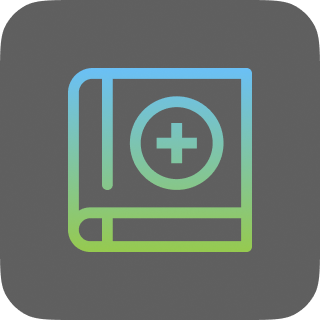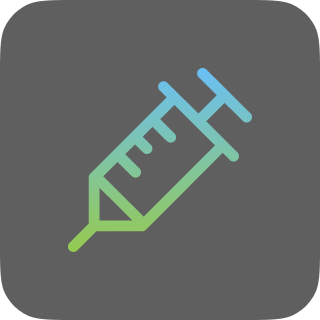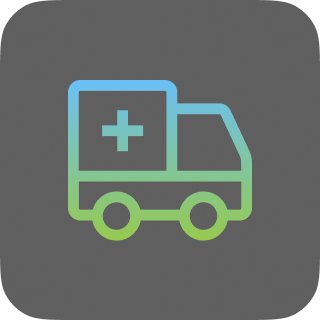Is this your child’s symptom?
- Your child was diagnosed with a Strep throat infection
- A doctor has told you your child probably has Strep throat or
- Your child has a positive Strep test
- Your child is taking an antibiotic for Strep throat and you have questions
- You are worried that the fever or sore throat is not getting better fast enough
Symptoms of Strep Throat Infection
- Pain, discomfort or raw feeling of the throat
- Pain is made worse when swallows
- Children less than 2 years of age usually can’t complain about a sore throat. A young child who does not want favorite foods may have a sore throat. They may also start to cry during feedings.
- Other symptoms include sore throat, fever, headache, stomach pain, nausea and vomiting.
- Cough, hoarseness, red eyes, and runny nose are not seen with Strep throat. These symptoms point more to a viral cause.
- Scarlet fever rash (fine, red, sandpaper-like rash) is highly suggestive of Strep throat.
- If you look at the throat with a light, it will be bright red. The tonsil will be red and swollen, often covered with pus.
- Peak age: 5 to 15 years old. Not common under 2 years old unless sibling has Strep.
Cause of Strep Throat
- Group A Strep is the only common bacterial cause of a throat infection. The medical name is Strep pharyngitis.
- It accounts for 20% of sore throats with fever.
- Any infection of the throat usually also involves the tonsils. The medical name is Strep tonsillitis.
Diagnosis of Strep Throat
- Diagnosis can be confirmed by a Strep test on a sample of throat secretions.
- There is no risk from waiting until a Strep test can be done.
- If your child has cold symptoms too, a Strep test is usually not needed.
Prevention of Spread to Others
- Good hand washing can prevent spread of infection.
When to Call Us for Strep Throat Infection
Call 911 Now
Call Doctor or Seek Care Now
| Contact Doctor Within 24 Hours
Contact Doctor During Office Hours
| Self Care at Home
|
Care Advice for a Strep Throat Infection
- What You Should Know About Strep Throat:
- Strep causes 20% of throat and tonsil infections in school age children.
- Viral infections cause the rest.
- Strep throat is easy to treat with an antibiotic.
- Complications are rare.
- Here is some care advice that should help.
- Antibiotic by Mouth:
- Strep infections need a prescription for an antibiotic.
- The antibiotic will kill the bacteria that are causing the Strep throat infection.
- Give the antibiotic as directed.
- Try not to forget any of the doses.
- Give the antibiotic until it is gone. Reason: To stop the Strep infection from flaring up again.
- Sore Throat Pain Relief:
- Age over 1 year. Can sip warm fluids such as chicken broth or apple juice. Some children prefer cold foods such as popsicles or ice cream.
- Age over 6 years. Can also suck on hard candy or lollipops. Butterscotch seems to help.
- Age over 8 years. Can also gargle. Use warm water with a little table salt added. A liquid antacid can be added instead of salt. Use Mylanta or the store brand. No prescription is needed.
- Medicated throat sprays or lozenges are generally not helpful.
- Pain Medicine:
- To help with the pain, give an acetaminophen product (such as Tylenol).
- Another choice is an ibuprofen product (such as Advil).
- Use as needed.
- Fever Medicine:
- For fevers above 102° F (39° C), give an acetaminophen product (such as Tylenol).
- Another choice is an ibuprofen product (such as Advil).
- Note: Fevers less than 102° F (39° C) are important for fighting infections.
- For all fevers: Keep your child well hydrated. Give lots of cold fluids.
- Fluids and Soft Diet:
- Try to get your child to drink adequate fluids.
- Goal: Keep your child well hydrated.
- Cold drinks, milk shakes, popsicles, slushes, and sherbet are good choices.
- Solids. Offer a soft diet. Also avoid foods that need much chewing. Avoid citrus, salty, or spicy foods. Note: Fluid intake is much more important than eating any solids.
- Swollen tonsils can make some solid foods hard to swallow. Cut food into smaller pieces.
- What to Expect:
- Strep throat responds quickly to antibiotics.
- The fever is usually gone by 24 hours.
- The sore throat starts to feel better by 48 hours.
- Return to School:
- Your child can return to school after the fever is gone.
- Your child should feel well enough to join in normal activities.
- Children with Strep throat need to be taking an antibiotic for at least 12 hours.
- Call Your Doctor If:
- Trouble breathing or drooling occurs
- Dehydration suspected
- Fever lasts more than 2 days after starting antibiotics
- Sore throat lasts more than 3 days after starting antibiotics
- You think your child needs to be seen
- Your child becomes worse
And remember, contact your doctor if your child develops any of the ‘Call Your Doctor’ symptoms.
Disclaimer: this health information is for educational purposes only. You, the reader, assume full responsibility for how you choose to use it.
Copyright 2000-2023. Schmitt Pediatric Guidelines LLC.









